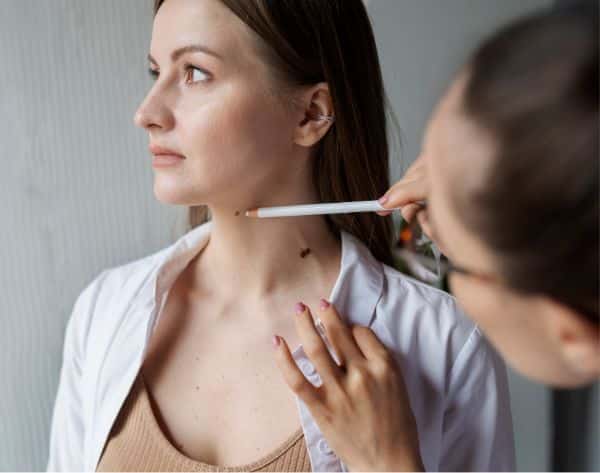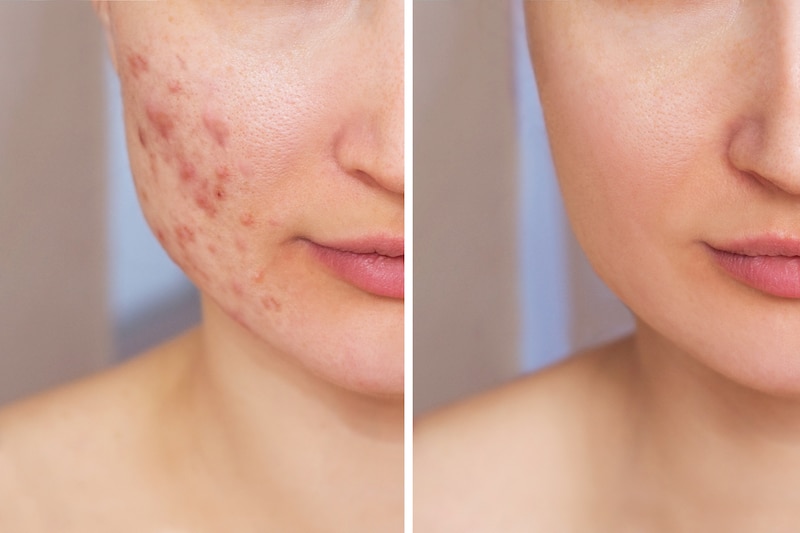SKIN CANCER
Ablative Laser For Skin Cancer

What Ablative Laser Cancer Treatment?
Ablative lasers are cutting-edge tools in the fight against skin cancer, offering precision in targeting and removing cancerous cells. These lasers work by vaporising the targeted tissue layer by layer, making them a powerful option for treating certain types of skin cancers.
Ablative laser cancer treatment stands as a progressive option in the realm of skin cancer care, offering a balance of precision, efficacy, and minimised invasiveness. For personalised insights into whether this treatment is right for you, schedule a consultation with Dr Tina Fang.
Key Information
- Precision Targeting: Ablative lasers precisely target cancerous cells, minimizing damage to surrounding healthy tissue.
- Effective Tumor Removal: This treatment is particularly effective for superficial skin cancers, providing an efficient means of tumor removal.
- Minimal Scarring: The precision of ablative lasers often results in less scarring compared to traditional surgical methods.
Ablative laser treatment is suitable for individuals with:
- Superficial Skin Cancers: Particularly effective for treating basal cell carcinomas and squamous cell carcinomas on the skin's surface.
- Those Averse to Surgery: Patients seeking a non-surgical alternative for tumor removal.
While ablative laser cancer treatment is generally considered safe and effective, it is important to be aware of potential side effects, which can vary from person to person. It's crucial to discuss these potential side effects with your healthcare provider before undergoing the procedure. Here are some common side effects associated with ablative laser treatment:
Redness and Swelling: Immediately after the procedure, it's normal to experience redness and swelling in the treated area. This is usually temporary and subsides within a few days.
Pigmentation Changes: Ablative lasers may cause changes in skin pigmentation. Some individuals may experience temporary or permanent lightening or darkening of the treated skin.
Scarring: While ablative lasers are designed to minimize scarring, there is still a risk, particularly if the treated area is large. Proper post-treatment care can help minimize this risk.
Pain or Discomfort: Patients may experience mild pain or discomfort during and after the procedure. This is typically managed with pain medications or topical treatments as prescribed by the healthcare provider.
Itching and Dryness: The treated area may feel itchy or dry during the healing process. It's important not to scratch or pick at the skin to avoid complications.
Infection: Although rare, there is a risk of infection. Following post-treatment care instructions, such as keeping the treated area clean, can help prevent infections.
Increased Sensitivity to Sun: Ablative laser treatment can make the skin more sensitive to sunlight. It is essential to protect the treated area from sun exposure and use sunscreen as recommended by your healthcare provider.

Aftercare Instructions for Ablative Laser Treatment
Sun Protection: Protect the treated area from sun exposure to promote healing and prevent hyperpigmentation.
Follow-up Appointments: Regular follow-up appointments are scheduled to monitor healing progress and address any concerns.
Skin Care Routine: A gentle skincare routine, as advised by Dr Tina, can aid in the healing process.
WHICH TREATMENTS ARE AVAILABLE?
Book in for a skin consultation with Dr Tina for an individualised treatment plan. Your best treatment will often depend on your age, gender, triggers and causes of your condition.
Dr Tina can advise on a combination including:
- Cryotherapy
- Biopsies
- Excisions
- Photodynamic Therapy
- Ablative Laser for Skin Cancer
- Compounding Medication
RESTORE YOUTHFULNESS
Schedule a Consultation
Call us on 07 3852 4878 or simply book an appointment

